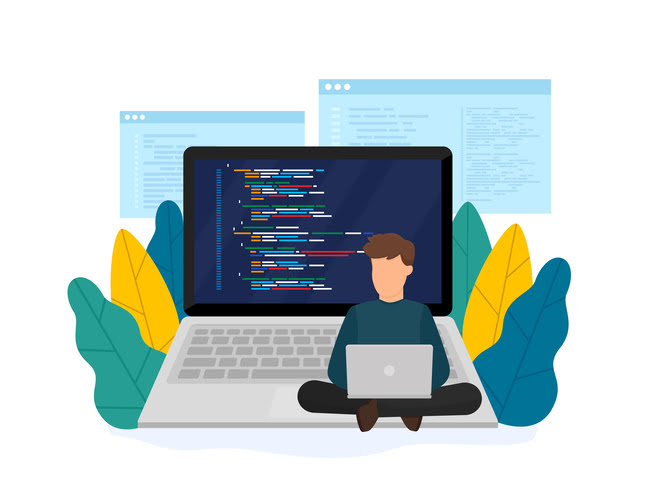How to Code a Blockchain App in 5 Steps Enterprise-Grade Web3 APIs
Once we have connected to this node, we can run the code from the code example above. When we do, it will send a message to the Ethereum node we’re connected to, and that node will broadcast the transaction to the entire network. Once the transaction is complete, the balance of the `to` account will increase, and the balance of the `from` account will decrease. All of the nodes on the network will update their data to reflect this change in account balances to ensure that they are accurate. Blockchain developers play a vital role in the success of any digital currency or blockchain project. Upskilling is the process of teaching an employee new skills.
Fujitsu launches blockchain collaboration tech to build Web3 services – Fujitsu
Fujitsu launches blockchain collaboration tech to build Web3 services.
Posted: Thu, 15 Jun 2023 01:31:44 GMT [source]
But there are some constraints as far as difficulty is concerned. Nevertheless, every miner is going to get a reward because they are validating the given transactions. Blockchain is a budding technology that has tremendous scope in the coming years. In this tutorial, we will briefly cover the basic concepts of Blockchain. We’ll also create a basic Blockchain program in Java to understand how it works in the programming world.
Examples of industries using Blockchain
Next, it calculates the hash to add digital fingerprints to the blocks. The code first imports the necessary libraries for creating a blockchain. The first function analyzes the code and creates an object model of it based on Python’s standard classes and modules.
- If so, you may not need to jump the gun on implementing blockchain.
- Some companies, keenly aware of the growing importance of the Blockchain technology, will upskill individual employees, empowering them to handle the new tech.
- Only then will you be ready to explore blockchain applications development.
- It is open source and designed for the general public means nobody owns the control of the Bitcoin.
- The four main types of blockchain vary by how open or closed they are, which affects their speed, privacy and security.
The most well-known cryptocurrency is Bitcoin, which was created in 2009 by an unknown person or group using the pseudonym Satoshi Nakamoto. Since then, thousands of other cryptocurrencies have emerged, each with its own unique features and use cases. Bitcoin originally imposed a cap of 1 megabyte on its blocks in an effort to reduce the risk of cyber threats. However, each coin is capable of recording an infinite number of transactions, with each transaction increasing the size of each block. As a result, blocks could eventually exceed any size limitations imposed on them, further hindering processing speed. Global adoption of blockchain hinges on its ability to handle a growing number of transactions as demand increases—all while operating as expected and defending itself from cyberattacks.
must-have blockchain developer skills
DApp developers- dApp developers build decentralized applications on the blockchain. Space Doggos is particularly useful, as you use actual Solidity code in designing your space dog. These are fun and entertaining ways of getting a grasp on Blockchain’s development, and possibly a bit less intimidating.

Blockchain started off as a public permissionless technology, later, another type of blockchain introduced, each for its own specific set of use cases. Public/Permissionless blockchains are open, decentralized and slow whereas Private/ Permissioned blockchains are closed and centralized, either partially or completely. Blockchain technology is also more effective to modernize business processes.
How to Implement Call by Reference in C++
It consists of a network of computers, known as nodes, that work together to validate and record transactions on the Blockchain. Each node has a copy of the ledger, and any changes made to the ledger are verified and recorded across all nodes in the network. A Blockchain can store any type of information, not just financial transactions. Although Bitcoin initiated the block-size debate, all blockchain applications will be affected as developers decide whether to increase block size without sacrificing speed. Decentralization is one of the main reasons why industries use blockchain.

Python’s ability to use human-friendly syntax to orchestrate complex applications makes it suitable for writing blockchain programs. It’s object-oriented, general-purpose, modular, and easy to learn. Its soft spot for upcoming developers and ease of implementation gives it a go in crypto development.
What Does a Blockchain Developer Do?
While blockchain development and infrastructural upkeep are crucial, project management is necessary to keep the entire process grounded and balanced. Blockchain project managers are responsible for outlining developmental processes, establishing goals and timelines, and monitoring progress and efficiency. They are skilled in balancing traditional managerial tasks and team leadership responsibilities with high-level tech-savviness, budgetary forward-thinking, and communication. Independent learning options, though less structured, are another viable way to learn blockchain basics.
In terms of popularity and utility, Java is a strong competitor to C and the best language for blockchain. Java has a plethora of Application Programming Interfaces that include numerous java Software components, bundles, integrations, and so on. The amount of time it takes an individual to become a blockchain developer depends on that person’s level how to program blockchain of experience and expertise. It also depends on the individual’s particular circumstances and how much time he or she can devote to building an understanding of blockchain and its network architecture. Some programmers might be able to master blockchain development in only a few months, while others might take several years or even longer.
Top Programming Language for Blockchain Development
Yes, Python is one of the blockchain languages that developers use to build blockchains. Ruby is a multi-paradigm language; it allows developers to choose from different programming styles based on their preferences. The most popular approach is object-oriented programming, which enables programmers to create objects they can be reused in other parts of their codebase. Blockchain technology is growing exponentially, attracting developers who want to become part of the revolution. This field consists of many languages, each with its own features and advantages.
